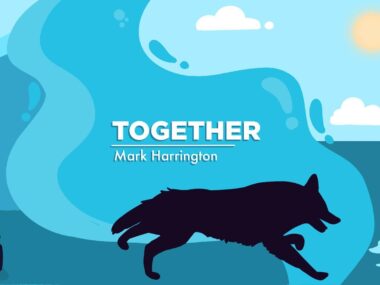Living with MG can feel isolating at times, but we’re not alone
My family, friends, and community walk this journey with me
Written by |

Note: This column describes the author’s own experiences with several medications, including Ultomiris (ravulizumab-cwvz). Not everyone will have the same response to treatment. Consult your doctor before starting or stopping a therapy.
Ecclesiastes 3:15 (KJV) reads in part, “That which hath been is now; and that which is to be hath already been … .” This holiday season I learned how these words can apply to life with myasthenia gravis (MG).
In October 2021, I returned home to New England for the first time since my diagnosis with MG the previous year. I was in rough shape. I’d unsuccessfully treated my symptoms with combinations of Mestinon (pyridostigmine bromide), mycophenolate mofetil, intravenous immunoglobulin therapy, and prednisone. Ptosis (a drooping upper eyelid), slurred speech, fatigue, and difficulty with speech and swallowing were physical challenges that accompanied my MG.
Early that summer, I began experiencing severe pain in my legs, hips, and back. The pain spread to my testicles, and I began experiencing urinary incontinence. I reached the point where pain was constant. Even now it’s difficult to write about it. Many times, I begged God to take me. It seemed only death could relieve my suffering. High doses of prednisone had caused avascular necrosis, or bone tissue death, in both of my hips.
When I arrived in New England that fall, I thought I was at rock bottom. Then the manure hit the fan: I began my first myasthenic crisis and lost my ability to swallow, speak, and see. My MG-ADL score, which measures the impact of MG on daily functions, reached 18. Scores can range from 0-24, with higher numbers indicating more impairment. One morning, when I couldn’t breathe, I dialed 911 and was taken to the emergency room at Maine Medical Center.
Over the course of the next year, I had two more myasthenic crises and two hip surgeries. I tried a newly approved medication that unfortunately didn’t control my symptoms. Then I began treatment with Ultomiris (ravulizumab-cwvz), and my life changed. My symptoms greatly improved. I had turned a corner in my MG journey.
Lessons from a recent blip
When I arrived in Maine recently, family and friends remarked on how good I looked and how much better I seemed compared with previous visits — one as recent as last summer. This boosted my morale. What could go wrong? But as my Irish heritage taught me, something can always go wrong.
A couple of days after Christmas, I had trouble swallowing my food. I began to slur my words and breathing became difficult. I panicked and forgot the lessons learned from the previous four years.
Luckily, my sister brought me down to earth. She reminded me we’d developed a protocol, in conjunction with my neurologist, for such a situation. She also reminded me that I was tapering off prednisone. I took a combination of drugs and went to bed. It worked. I was better in the morning, and my anxiety had abated.
Ultomiris has been a godsend for me. This recent blip was also a godsend. It reminded me that it’s necessary to stick closely to one’s treatment plan and that it’s essential to have people in our lives who can tug us down to earth when we need it. People who, in those dark moments, let us know that it’s gonna be OK.
Having lived with MG for almost five years, I know the loneliness this journey brings. I cannot walk it alone. I walk with family and friends whose compassion and encouragement know no limits.
I’m not always the best patient. Some days I find it difficult to keep a positive outlook and must resist the temptation to self-medicate. I’m not strong enough to go it alone.
If you don’t have someone who can share your struggles, don’t think you must bear your burdens alone. There’s a global support network for MG patients. Bionews, the parent company of this website, offers incredible resources that connect caregivers and patients.
When pain would cloud my days and life was at its darkest, I would think of author Tracy McMillan’s words: “Everything works out in the end. If it hasn’t worked out yet, then it’s not the end.” Sometimes all we have is this hope. Hold tightly to this thought and remember: You don’t walk alone.
Note: Myasthenia Gravis News is strictly a news and information website about the disease. It does not provide medical advice, diagnosis, or treatment. This content is not intended to be a substitute for professional medical advice, diagnosis, or treatment. Always seek the advice of your physician or other qualified health provider with any questions you may have regarding a medical condition. Never disregard professional medical advice or delay in seeking it because of something you have read on this website. The opinions expressed in this column are not those of Myasthenia Gravis News or its parent company, Bionews, and are intended to spark discussion about issues pertaining to myasthenia gravis.







Amy
I understand. Since my diagnosis I have developed a really bad health anxiety and I run to the doctor for anything and everything. Sometimes I know it's nothing but just go. I do virtual visits at the drop of a hat. Many times those doctors give outrageous diagnosis over the phone. I know I have to stop but I don't know how. I'm afraid all the time.